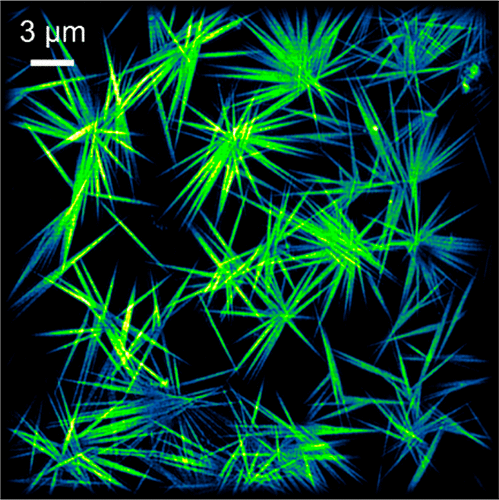当前位置:
X-MOL 学术
›
J. Phys. Chem. Lett.
›
论文详情
Our official English website, www.x-mol.net, welcomes your feedback! (Note: you will need to create a separate account there.)
CREIM: Coffee Ring Effect Imaging Model for Monitoring Protein Self-Assembly in Situ
The Journal of Physical Chemistry Letters ( IF 5.7 ) Pub Date : 2017-09-22 00:00:00 , DOI: 10.1021/acs.jpclett.7b02147 Michael Shaw 1, 2 , Angelo Bella 1 , Maxim G. Ryadnov 1
The Journal of Physical Chemistry Letters ( IF 5.7 ) Pub Date : 2017-09-22 00:00:00 , DOI: 10.1021/acs.jpclett.7b02147 Michael Shaw 1, 2 , Angelo Bella 1 , Maxim G. Ryadnov 1
Affiliation

|
Protein self-assembly is fundamental to nanotechnology. Self-assembling structures are produced under static in vitro conditions typically forming over hours. In contrast, hydrodynamic intracellular environments employ far shorter time scales to compartmentalize highly concentrated protein solutions. Herein, we exploit the radial capillary flow within a drying sessile droplet (the coffee ring effect) to emulate dynamic native environments and monitor an archetypal protein assembly in situ using high-speed super-resolution imaging. We demonstrate that the assembly can be empirically driven to completion within minutes to seconds without apparent changes in supramolecular morphology. The model offers a reliable tool for the diagnosis and engineering of self-assembling systems under nonequilibrium conditions.
中文翻译:

CREIM:咖啡环效应成像模型监测蛋白质自组装原位
蛋白质自组装是纳米技术的基础。自组装结构是在静态体外条件下产生的,通常在数小时内形成。相反,流体动力细胞内环境采用短得多的时间尺度来分隔高浓度的蛋白质溶液。在这里,我们利用干燥的无蒂液滴(咖啡环效应)中的径向毛细流来模拟动态的自然环境并监测原位蛋白质组装使用高速超分辨率成像。我们证明,可以在几分钟到几秒钟内凭经验驱动组装完成,而在超分子形态上没有明显变化。该模型为非平衡条件下的自组装系统的诊断和工程设计提供了可靠的工具。
更新日期:2017-09-23
中文翻译:

CREIM:咖啡环效应成像模型监测蛋白质自组装原位
蛋白质自组装是纳米技术的基础。自组装结构是在静态体外条件下产生的,通常在数小时内形成。相反,流体动力细胞内环境采用短得多的时间尺度来分隔高浓度的蛋白质溶液。在这里,我们利用干燥的无蒂液滴(咖啡环效应)中的径向毛细流来模拟动态的自然环境并监测原位蛋白质组装使用高速超分辨率成像。我们证明,可以在几分钟到几秒钟内凭经验驱动组装完成,而在超分子形态上没有明显变化。该模型为非平衡条件下的自组装系统的诊断和工程设计提供了可靠的工具。


























 京公网安备 11010802027423号
京公网安备 11010802027423号